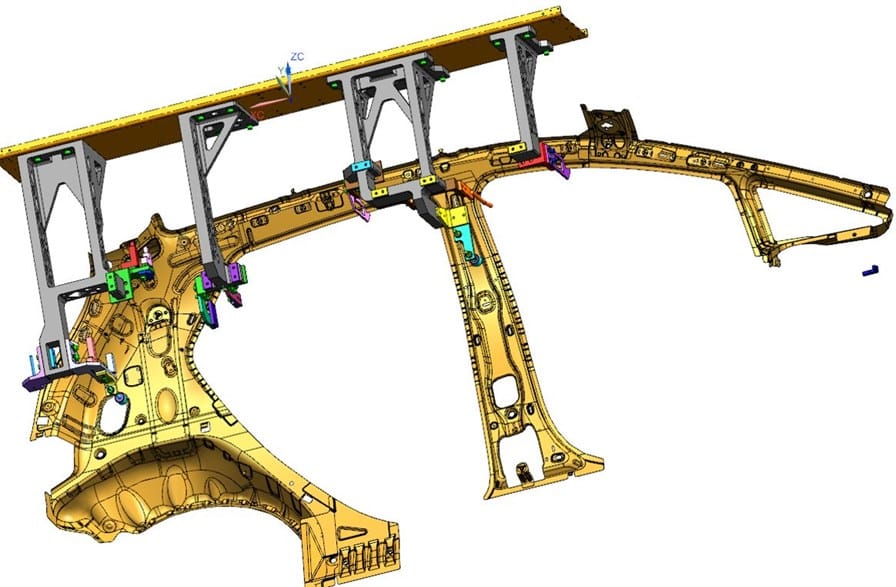- May 24, 2023
- Posted by: TheD2MCo
- Category: News

Integrating sustainable manufacturing methods with 3D printing for automotive
The automotive industry is constantly challenged to adopt more climate-friendly practices and curtail activities that hinder sustainability. Traditional manufacturing techniques, such as casting, molding, and machining, have had significant environmental impacts.
As a result, the automotive industry has recognized this challenge and is adopting sustainable manufacturing methods to reduce its carbon footprint. One such approach is additive manufacturing. Below, we cover four ways that 3D printing helps automotive manufacturers achieve sustainability:
1. Less Material Usage
Additive manufacturing enables automotive manufacturers to use only the necessary materials for producing a part, resulting in a reduced amount of waste, energy consumption, and machine emissions during production.
Traditional manufacturing techniques such as casting or machining use more material, resulting in more waste. By reducing waste, additive manufacturing helps in reducing environmental pollution. Furthermore, the material used in additive manufacturing is often recyclable, leading to a more sustainable process.
2. Eco-friendly Material Options
By using eco-friendly materials, automotive manufacturers reduce their carbon footprint and contribute to a more sustainable environment.
Automotive manufacturers looking for environmentally sustainable material options can choose thermoplastics derived from more sustainable sources. They include recycled plastics and polymers made from cornstarch and soybeans. They’re a good alternative to traditional petroleum-based materials though their application space may be limited.
3. Reduce Transportation and Shipping
Historically, automotive manufacturers have relied on a global supply chain, resulting in a large carbon footprint due to shipping and transportation. However, with the recent advancements of additive manufacturing technology, manufacturers can produce parts in-house.
This reduces transportation carbon emissions drastically. By reducing transportation, automotive manufacturers are not only reducing their carbon footprint but also saving costs.
General Motors, for instance, benefited tremendously from additive manufacturing when they needed an alternative solution for producing an overhead conveyor pallet. The existing conveyor system experienced occasional downtime due to excess tooling weight. Aluminum risers were considered as a lighter alternative, but they required offsite maintenance and repair, leading to a search for an alternative solution.
GM opted to use FDM® Nylon 12CF (carbon fiber) material to 3D print the risers for the overhead conveyor pallets, using an F900™ printer. This material is lighter than aluminum, yet boasts excellent stiffness and strength.
In this example, 3D printing allowed for rapid production of spare parts, and eliminated the need for special welding and maintenance associated with aluminum risers.
 4. Prototyping Before Mass Production.
4. Prototyping Before Mass Production.
One of the significant benefits of additive manufacturing is accelerated prototyping and testing. Additive manufacturing allows designers and engineers to create prototypes for error detection and design optimization before the final project production.
This leads to significant savings in time, money, and resources, as the produced parts match the final version, and they are immediately usable. With the ability to produce and test prototypes in days, instead of weeks or months, automotive manufacturers can reduce their carbon footprint significantly.
Moving closer to a sustainable automotive industry.
The automotive industry is moving towards sustainability, and additive manufacturing is playing a significant role in achieving this goal. By adopting additive manufacturing, automotive manufacturers can reduce their carbon footprint, use eco-friendly materials, and produce parts in-house, leading to significant savings in time, money, and resources.
Additive manufacturing is a sustainable solution that can help the automotive industry reduce its impact on the environment and move towards a more sustainable future.
ARTICLE WAS WRITTEN BY JIM ROMEO, STRATASYS.
